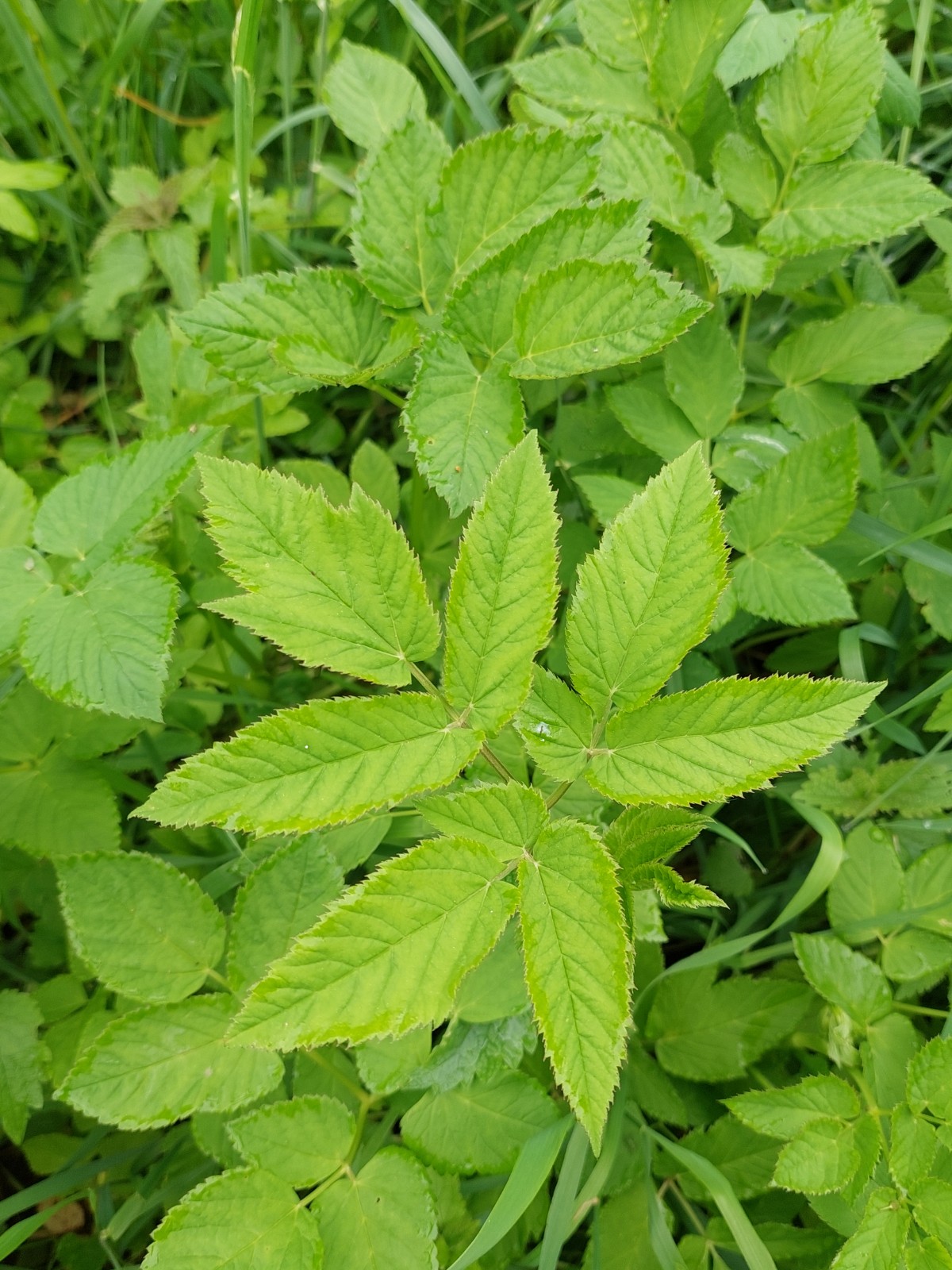GOUTWEED (‘Aegopodium podagraria L.’)
 © E. Bēvalde.
© E. Bēvalde.Perennial, large (50–110 cm) herbaceous plant of the sedge family. Rhizome creeping, nodular. The plant reproduces abundantly by underground shoots. Stem erect, grooved, hollow, branched at the top, usually glabrous. Blooms from June to August.
Goutweed is a valuable food product due to the large amount of vitamin C and minerals in its composition. Young leaves are used in nutrition. In ancient times, other herbs were covered with spices to keep them fresh longer. Fresh leaves contain up to 85,2% water, 1,7% protein, 1,4% sugar, 1,3% fiber, 1,9% carotene, choline, (promotes metabolic processes in the body), 155 mg% vitamin C ( flavored with twice as much vitamin C as lemons), 0.04% essential oils. 100 g of fresh leaves contains 16,6 mg of iron, 2 mg of copper, 1.7 mg of titanium, organic acids, flavonoids, enzymes, phytoncides, carbohydrates, coumarins. The roots contain essential oil, saponins, starch, carbohydrates. Such a set of biologically active substances makes it possible to consider goutweed as one of the most valuable wild plants that can be used in nutrition.
The leaves are collected in the spring, before flowering.
In ancient times, goutweed was mainly used to heal gout patients, hence the scientific name – podagraria. Fresh and dried leaves are used for medicinal purposes.

